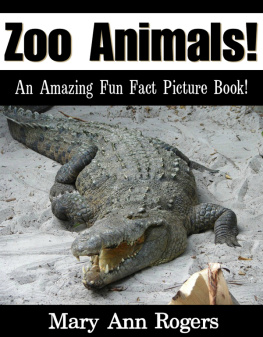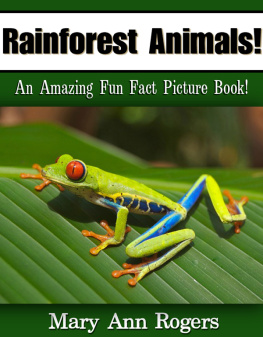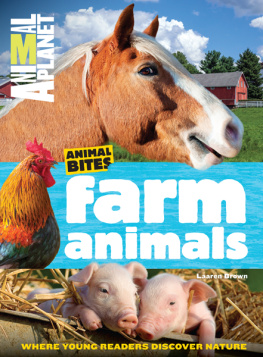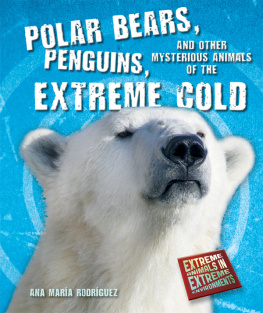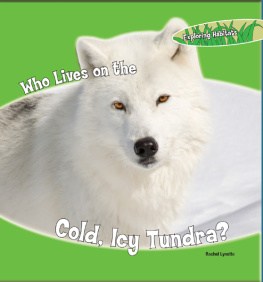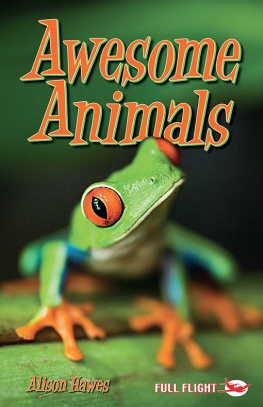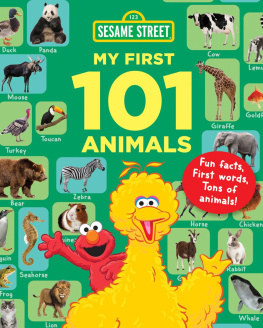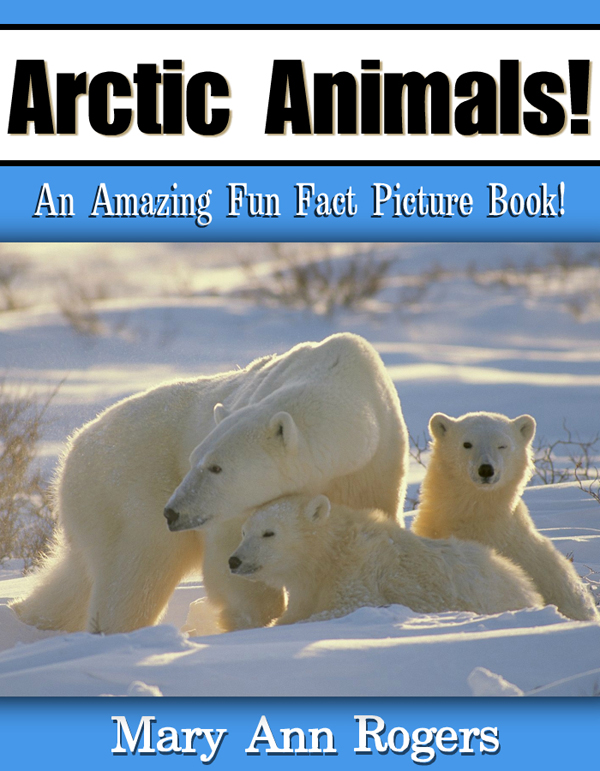ArcticAnimals
AnAmazing Fun Fact
PictureBook!
MaryAnn Rogers
Table of Contents
Publishers Notes
Copyright 2013 by Mary AnnRogers. All rights reserved. No duplication without the express writtenpermission of the author.
TheArctic

The Arctic
There are places on planet earth that are windy, cold andsnowy for most of the year. One such place is the Arctic, which is thenorthernmost land and sea on the earth. Some places in the Arctic can dip intemperature to nearly -90 F! As humans, our bodies arent able to adapt toweather this cold; however, certain animals can live in the Arctic and othercold regions and can not only survive, but thrive. These animals have specialcharacteristics that make it possible for them to survive extreme coldtemperatures. Lets take a look at some of them.
Polar Bear

Polar Bear and Cubs
The polar bear is the largestland meat-eating animal on planet earth. Its fur looks white, but is actuallyclear and hollow, which helps to hold in heat from the sun. It is also waterrepellant, which allows them to shake dry quite easily after a swim in thechilly Arctic waters. Polar bear females can grow to weigh between 500 600pounds. Males can grow to over 10 feet tall and weigh as much as 1600 pounds!Polar bears are very intelligent. They have been known to build ventilationsystems in their dens, and even discipline their young when they get out ofline! A polar bears main source of food is seals. They have a terrific senseof smell that allows them to detect a seal up to a mile away!
Arctic Fox
Arctic Fox
Arctic foxes are small animals native to theArctic regions. They have thick coats that help keep their body temperaturestable, enabling them to survive in extremely low temperatures. Due to anexcellent sense of hearing, they are good hunters. Their main food source isLemmings, which they can detect even when beneath the snow. When they cantfind enough to eat, they will track larger animals that are predators tothemselves, such as the polar bear, to eat their leftovers! Like many Arcticanimals, the arctic foxs coat changes colors and thickness with the seasons. Thisphenomenon is called cryptic coloration.
Arctic Tern
Arctic Tern
Arctic Terns are seabirds with long beaks and thick feathers for warmthin cold temperatures. They have the longest migration of any known animal,averaging more than 40,000 miles in a single year! From their breeding groundsin the Arctic or Greenland, they fly to the Antarctic and back. Because of thisjourney, the birds enjoy two summers each year, and see more daylight than anyother animal. The birds will travel about 1.5 million miles distance in alifetime. Arctic Terns are carnivores, and eat fish, insects and crustaceans. ArcticTerns nests are usually made in a slight hole or depression in the ground. Theygather grass and other materials to line the nest. This is where the female lays2 3 eggs.
Arctic Hare
Arctic Hare
Arctic hares, sometimes called polar rabbits, areslightly larger than normal rabbits, with longer hind legs and ears. Like manyother Arctic animals, their coat changes color and thickness with the seasons.In the winter, it turns a beautiful white that matches the snow, which helpscamouflage them from predators. Arctic hares have been known to dig burrows inthe snow and huddle together for warmth in extreme cold temperatures. They areherbivores that eat grass, twigs and berries. Arctic hares are quick. They canrun up to 40 miles per hour!
Emperor Penguin
Emperor Penguins
Emperor Penguins are verypeculiar looking birds that do not fly, but are excellent swimmers! They can stay submerged in the chilly Arctic waters for about 18minutes and dive to depths of more than 1,700 feet! The average adultheight is about 4 feet tall, and they can weigh anywhere from 50 100 pounds.They have special characteristics which allow them to survive in extreme coldtemperatures, such as the amount of feathers on their bodies. They have morethan any other bird, with about 100 feathers covering 1 square inch! EmperorPenguins eat mainly fish and crustaceans, with their tongue having specialbarbs to prevent prey from getting away. They typically live about 20 years inthe wild.
Muskox

Muskox
Muskoxen are large, musky smelling animalsthat travel in herds. In addition to their thick long coat, in the winter theygrow a second undercoat to provide protection against frigid temperatures. Thissecond coat falls off as summer approaches. Although they are called oxen, theyare actually related more to sheep and goats. In the past they were hunted byhumans for their hides and meat. However, many of the herds today live in NationalParks or Reserves, where they are protected by legislation. Whenthreatened by a predator, Muskoxen band together with their horns facing outwardto form an unbreakable circle. The bulls and cows (males and females) form theactual circle while their young stay in the middle.
Snowy Owl
Snowy Owl
Snowy Owls, also known asGreat White Owls, are one of the largest owl species. Snowy Owls are skillfulpredators, with lemmings and mice being their main food sources. After the owlhas caught its prey, it swallows it whole. While the meat of their prey isbeing digested, the bones, teeth, fur and other indigestible parts are formedinto oval pellets that the bird regurgitates about a day later. Snowy Owl malesare almost pure white, and their call sounds like the bark of a dog. Femaleshave dark spots, and their call is softer. Newborn Snowy owls have soft, delicatefeathers that cover their entire body. These feathers are called down. Agroup of Snowy owls is sometimes called a wisdom.
Harp Seal
Harp Seals
Harp seals are big animals that spend most of their timein the frigid waters of the Arctic. The thick blubber in their bodies helpsinsulate them from the cold. Harp seals swim in groups calledrookeries, and can dive to depths of 1,000 feet whilefeasting on fish. Harpseal babies, called pups, start life out with a yellow coat that quickly turnsto white. This coat lasts for about 12 days before falling out, at which timethe young seal is left alone to fend for itself. Until the pup learns to swim,which takes about 7 8 weeks, it does not eat, and lays stranded, making itvulnerable to predators. Seals have many predatorsincluding polar bears and humans.



